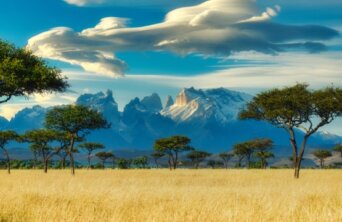- About
- Topics
- Picks
- Audio
- Story
- In-Depth
- Opinion
- News
- Donate
- Signup for our newsletterOur Editors' Best Picks.Send
Read, Debate: Engage.
| topic: | Climate action |
|---|---|
| located: | Kenya |
| editor: | Bob Koigi |
As indigenous communities continue to be knocked by unpredictable weather, which has altered their ways of life, their plight has not been given the attention it deserves.
The carbon credit market, although intricate and subject to controversy, has become a promising avenue for both environmental sustainability and economic empowerment within communities. This market operates on the principle of allowing entities to buy and sell credits representing the right to emit a certain amount of carbon dioxide or other greenhouse gases. In Kenya, one such project is working with pastoralists to increase carbon storage in soils by managing the grazing patterns of livestock herds.
The Northern Kenya Rangelands Carbon Project started in 2012 and is billed as the world’s largest soil carbon removal project and the first to generate carbon credits based on controlled livestock grazing practices.
Satellite images are used to assess the health of the vegetation and analyse how grazing affects plants' health.
The project manages where and when livestock grazes to allow vegetation in the protected areas called community conservancies to recover, a departure from the past when herders over-exploited them. As a result of the controlled grazing, carbon is removed from the atmosphere and trapped in the soil. To incentivise the herders to manage the grazing patterns, they receive payouts from the sale of carbon credits from the project. The credits have so far generated approximately $14.6 million.
The initiative, focusing on 1.9 million hectares, hopes to offset 50 million tonnes of carbon dioxide over 30 years, equivalent to yearly emissions from over 10 million cars. This, while generating revenue for the local communities, slows environmental degradation and promotes the conservation of habitat for some of the endangered species in the region, such as Grevy’s Zebra and Reticulated Giraffe.
It has also been hailed for promoting peace among pastoral communities in Northern Kenya, where intermittent conflicts break out due to diminishing land resources.
Despite global recognition as a future model, including at COP27, it has also come under criticism from a section of researchers and rights groups for interfering with traditional grazing practices and community land rights of pastoralists, not involving them in its implementation and an inaccurate carbon verification process. Indigenous rights advocacy group Survival International, for example, in a report, faults the project for altering pastoralists’ way of life while doing little to combat climate change.
As debate intensifies on the role of carbon credit projects in tackling the adverse effects of climate and whether there are tangible benefits to the local communities, the UN’s Intergovernmental Panel on Climate Change is warning that carbon dioxide emissions must be cut by 45 per cent by 2030, compared to 2010 levels. This should serve as a constant reminder that the carbon market must put its house in order for people and the planet.
Image by Thomas Bennie.

